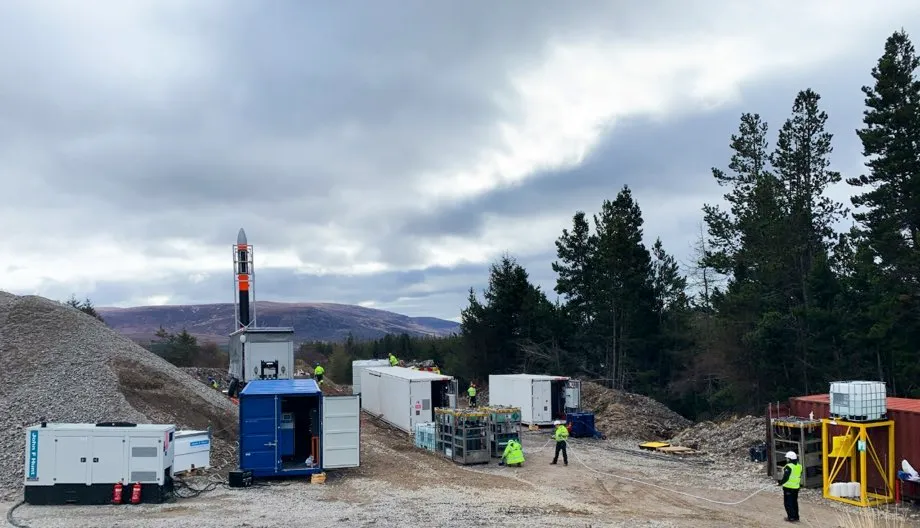The first rocket test of its kind in the UK for half a century has taken place in the Highlands.
Skyrora has completed a full ground static fire trial with the Skylark-L at Kildemorie Estate near Alness, marking a possible return to the space race for the nation.
It was the first vertical test of this magnitude in the UK since the Black Arrow Programme 50 years ago.
The Skylark-L rocket could be ready to launch from a UK spaceport as early as spring 2021, with the inaugural launch of the low Earth orbital (LEO) Skyrora XL rocket by 2023.
Volodymyr Levykin, chief executive of the firm, said: “As the launch aspect of the UK’s new space industry starts to emerge, there will be many events that have never happened here previously and this is one of them.
“This was a mammoth effort in very trying circumstances, so it is quite an achievement to be proud of.
Read more about rockets:
- Saturn V: Inside the rocket that launched Apollo 11 to the Moon
- Monster movers: 6 massive machines for shifting rockets, turbines and even ancient buildings
- The Space Race: how Cold War tensions put a rocket under the quest for the Moon
- How does SpaceX Falcon compare to other rockets?
“The operation was carried out while having to adhere to very strict social distancing measures, and in an extremely remote location, providing additional challenges, all of which were handled expertly by all the team.
“We see this as being the first significant step towards reaching space from our own soil and are very proud to have taken that step as part of the UK’s space ambitions.
“We are now in a full state of readiness for launch. It is this milestone that is the start of the UK’s new space revolution.
“With the expertise in place and all the necessary hardware at the ready, we are poised to take the next steps in making the UK a serious leader in the space business once again.”

Skylark-L is a bi-liquid propellant vehicle which performed all actions of a launch while restrained to the ground and prevented from taking off.
It is the firm’s first sub-orbital flight vehicle and is capable of reaching a height of around 100km, carrying a load of up to 60kg.
The team built the mobile launch complex within five days.
It was made up of several modules including a command centre, oxidiser and fuel handing containers and a compressed gas container.
Reader Q&A: Why is a rocket trajectory curved after launch?
Asked by: Fred Wilhelm, US
Students have long been taught that all projectiles follow a curved path known as a parabola. The explanation is that as they fly, they cover distance both horizontally and vertically – but only the latter is affected by the force of gravity, which bends the path of the projectile into a parabola.
For long-range rockets, things are more complex. For example, air resistance must be taken into account. But even ignoring that, a projectile doesn’t really follow a parabola – because the Earth isn’t flat. This means that gravity doesn’t simply pull objects straight back down. Instead, it pulls them towards the centre of the Earth, whose direction changes as the projectile moves further down-range, away from the launch site. Detailed calculations then reveal that the true trajectory is not a parabola, but part of an ellipse.
Read more:
